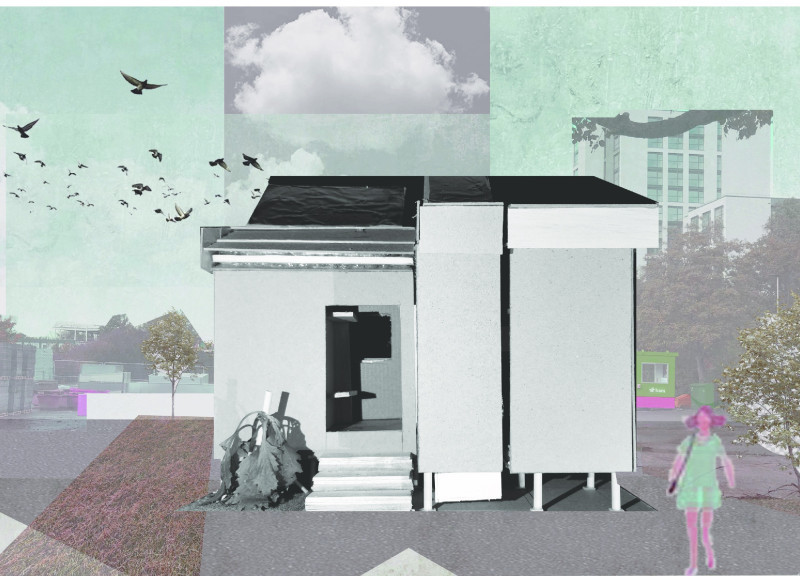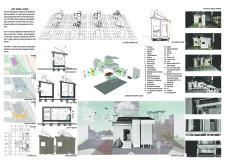5 key facts about this project
The OFF GRID LIVING project is situated in Leicester, UK, designed to provide a self-sufficient living environment for two residents. The layout emphasizes adaptability and sustainability, aiming to blend essential daily functions with an efficient workspace. This project addresses the growing trend of remote work, offering a compact solution that balances comfort and practicality within a limited space.
Functional Organization
The design separates living, service, and working areas to maximize functionality. This clear distinction allows for a harmonious coexistence of personal and professional activities. By placing the workspace apart from the main living area, occupants can focus on their tasks without household distractions.
Spatial Dynamics
The layout includes an entrance, a living room, a bedroom, a kitchen, a bathroom, a balcony, and a working area. Each component serves a distinct purpose while remaining within a compact footprint. Such careful planning addresses the needs of modern living, making smart use of space in an urban setting.
Sustainable Features
A notable aspect of the project is its use of renewable energy sources. Solar panels are positioned at an angle of 30° to 45°, which allows for optimal energy collection. This practical detail highlights a commitment to sustainability. The design also incorporates durable materials, such as a zinc roof, alongside tiling and counter battens, which support the long-term performance of the structure.
Building Performance
The project pays attention to moisture management through the use of a breathable roof membrane. This feature helps maintain a comfortable indoor environment. Moreover, Structural Insulated Panels (SIP) enhance energy efficiency, reducing the need for excessive heating or cooling.
Overall, the simplicity of the facade, along with carefully selected materials, creates a cohesive look that aligns with the focus on sustainability. Each design element works to meet the occupants' needs while integrating seamlessly with the surrounding environment.



















































